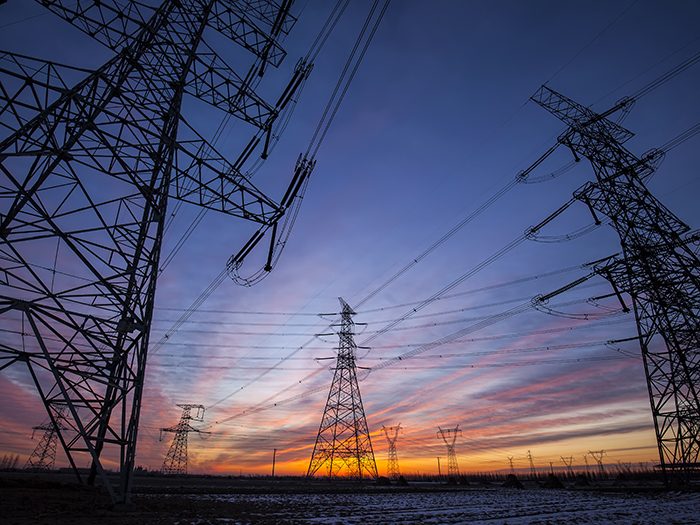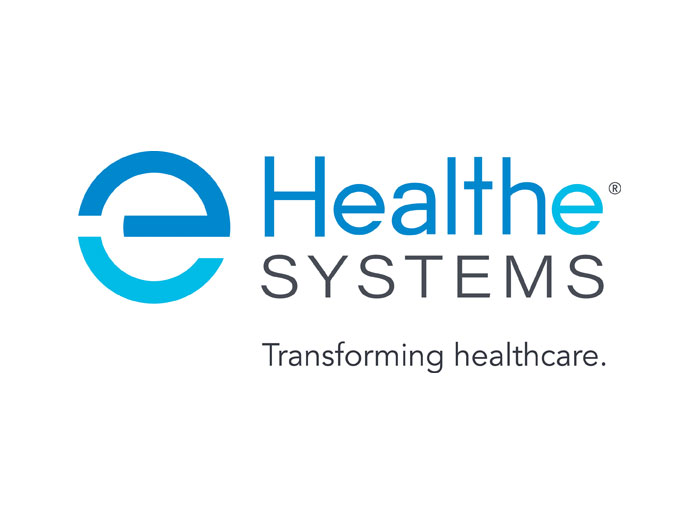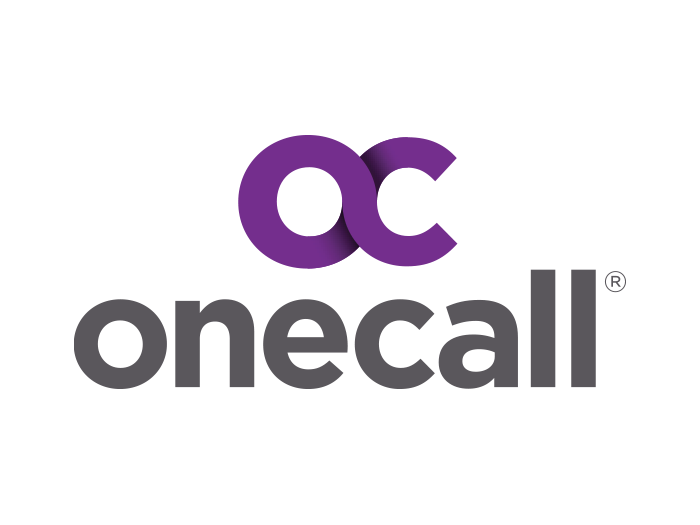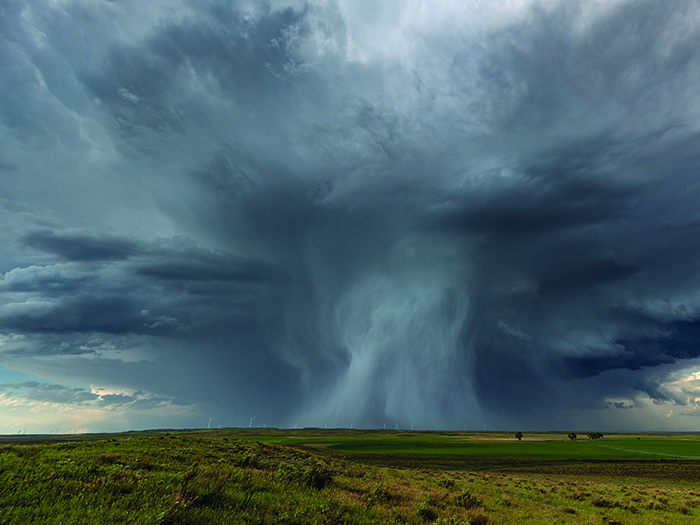Energy Risks
7 Critical Risks Facing the Utilities Industry

Change is constant in the utilities industry, but the pace of that change has accelerated in recent years and will continue to do so. Utilities must navigate a complex path while serving customers and create value for stakeholders. Here are seven critical risks facing the utilities industry.
1) Distributed Generation
Centralized power generation has been the order of business for more than a century. But new technologies have emerged to challenge that model and create options (such as rooftop solar) for distributed generation and storage of energy.
A distributed power model makes risk-management sense in terms of regional resilience in the event of weather events, cyber attacks, etc. Legislators have largely supported this shift, often favoring tax incentives for consumers investing in resources such as solar panels.
Now, utilities are being asked to accommodate power flowing in both directions, to and from consumers, without compromising safety and reliability. These distributed resources include not just rooftop solar, but wind power, batteries and more, profoundly altering the performance of the grid.
The imbalance for utilities is that while some customers are producing all or a portion of their own power, the centralized utility is still required to support the entire infrastructure for all sources of production.
“This is a critical risk, but it’s like a glacier, it’s moving slowly,” said Dan McGarvey, managing director with Marsh’s U.S. Power & Utility Practice.
Advances in distributed generation technologies may reduce the cost of alternative power, making it more attractive to consumers and lower demand for power produced at central power stations.
Other new technologies are suppressing demand in other ways. Smart meters, smart water heaters, smart thermostats, smart appliances, etc. are increasing in popularity among both residential and commercial customers seeking to manage costs and reduce their carbon footprint.
Batteries that allow for the storage of energy rather than sending it back to the grid will also impact the amount of energy that consumers rely on utilities for.
2) Community Choice Aggregation
In a Community Choice Aggregation (CCA), or municipal aggregation, structure, individual cities, towns or communities pool the purchasing power of their residents to make independent decisions about their energy purchasing decisions. Power magazine referred to CCAs as a buying club – the “Costco of energy.”
CCAs “peel off from the regulated grid structure and purchase energy from whomever they want,” explained McGarvey. Those that remain have to bear the brunt of the cost of infrastructure investment, and maintenance, he said.
“They put billions into nuclear and coal plants with the idea that there will be long-term recovery of those assets over time. So when they go to shut down an asset with plenty of life left, there are big issues with the regulators about how they recover those stranded assets.” — Dan McGarvey, managing director, U.S. Power & Utility Practice, Marsh
CCAs are currently in practice in seven states: Massachusetts, Ohio, California, Illinois, New Jersey, New York, and Rhode Island. Typically, the goals of CCAs are to lower costs for consumers and to control the energy mix, offering a greener generation portfolio than the local utility.
Investor-owned utilities have serious concerns about the impact of customer defection. In 2107, California utilities projected that CCA programs could result in the departure of up to 80 percent of their retail customers and load.
3) Stranded Assets
There’s an ongoing push to rotate out of coal and nuclear and into natural gas, with utilities voluntarily shutting down coal plants, building natural gas plants, converting coal plants to natural gas, as well as developing their own solar and wind resources. But stranded assets pose a vexing problem for companies.
“They put billions into nuclear and coal plants with the idea that there will be long-term recovery of those assets over time,” said McGarvey. “So when they go to shut down an asset with plenty of life left, there are big issues with the regulators about how they recover those stranded assets.”
Regulators are also incented to help companies become greener, so they want to support rotation. But at the same time, they’re not going to allow a lot of the stranded asset recovery costs to be passed along to rate payers.
Decommissioning costs deepen the pain of stranded assets, said McGarvey.
“It’s bad enough that your shutting down an asset that would have 20 or 30 years of life left … you can’t just walk away from the plant, you have to treat the impact to the environment that’s been created over many years. Decommissioning is a major expense.”
4) Cyber Resilience
Utilities and other infrastructure have become increasingly attractive targets for bad actors, whether for financial or political gain. Attempts to breach systems grow, especially for systems that control critical infrastructure such as the electric grid.
Decentralization of energy resources, and the interconnection with smart technologies is exploding the volume of potential entry points for attackers.
As the cyber threat to the grid becomes more persistent, regulators are working to ensure its security. On July 19, the Federal Energy Regulatory Commission ordered the North American Electric Reliability Corp. to broaden its Critical Infrastructure Protection reliability standards to include mandatory reporting of cybersecurity incidents that could harm the bulk electric system.
“It would be foolish to underestimate the level of sophistication of our adversaries when it comes to cyber,” said McGarvey. “We have to continue to stay a step ahead.”
5) Environmental Citizenship
Across all industries, environmental responsibility is going to become a significant investment issue, said McGarvey. Unfortunately gas and electric utilities are likely to be a disadvantage, at least at first.
The 10K of the future will include environmental impact statements, he said.
“[Investors are] going to want to see more about what’s my impact to the greater climate? What am I doing to reduce my carbon footprint and my impact on the environment? Investors are going to increasingly make that a factor in decisions about where to invest their money,” he said. “Companies with a good story will be more attractive investments.”
6) Customer Expectations
In the “traditional” customer-utility relationship, customers rarely had cause to interact with a utility unless there was a service issue or billing problem. The lack of alternatives left little urgency for utilities to focus on or invest in the customer experience.
But while power generation alternatives have been developing, retailers, financial services and other industries have been busy raising the bar on the customer experience, and changing expectations and demands.
Technology has dramatically changed what customers expect in terms of customer service applications, self-service capability, mobile engagement and even social media.
Utilities must engage customers and understand as well as meet their expectations, or customer loyalty will begin to erode.
7) Growing Talent Gap
More college students are hitching themselves to the technology train, which is shrinking the pool of graduates for other industries, including energy and utilities. According to a 2015 survey by the U.S. Department of Energy, 72 percent of energy employers reported having difficulty finding talent.
This problem is exacerbated greatly by the aging out of the current workforce. According to the Department of Labor, as much as 50 percent of the nation’s utility workforce will retire in the next five to 10 years.
The era of the loyal worker who stays at a utility for decades, the era where workers brought their sons and grandsons into the industry, is waning, said McGarvey.
“Every kid I know who’s 17 years old wants to design video games, wants to be a coder,” he said. “They want a popcorn machine and a pool table – they want to be on the Google campus.”
Some utilities are partnering with community colleges to offer placement for students that complete related programs. &











